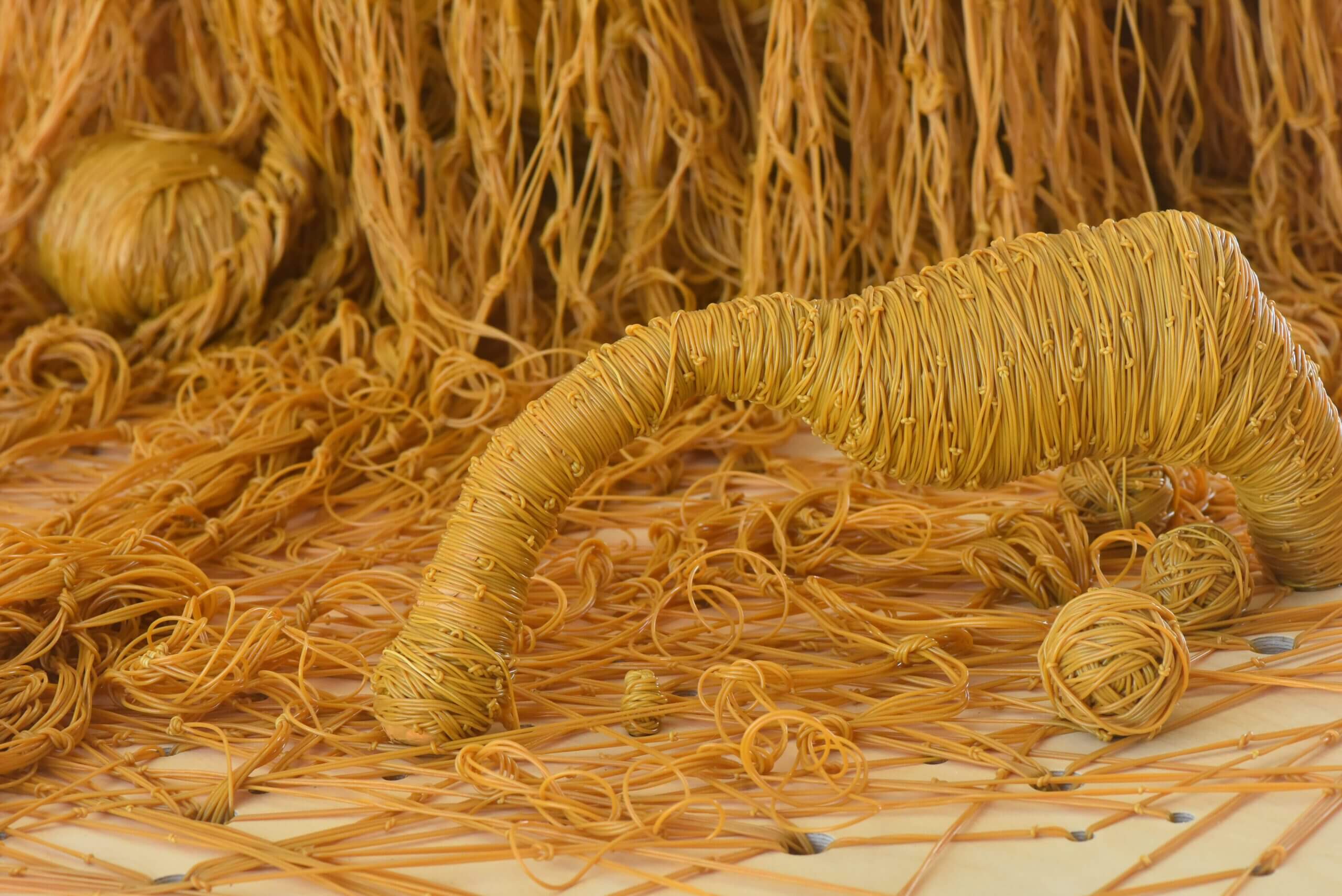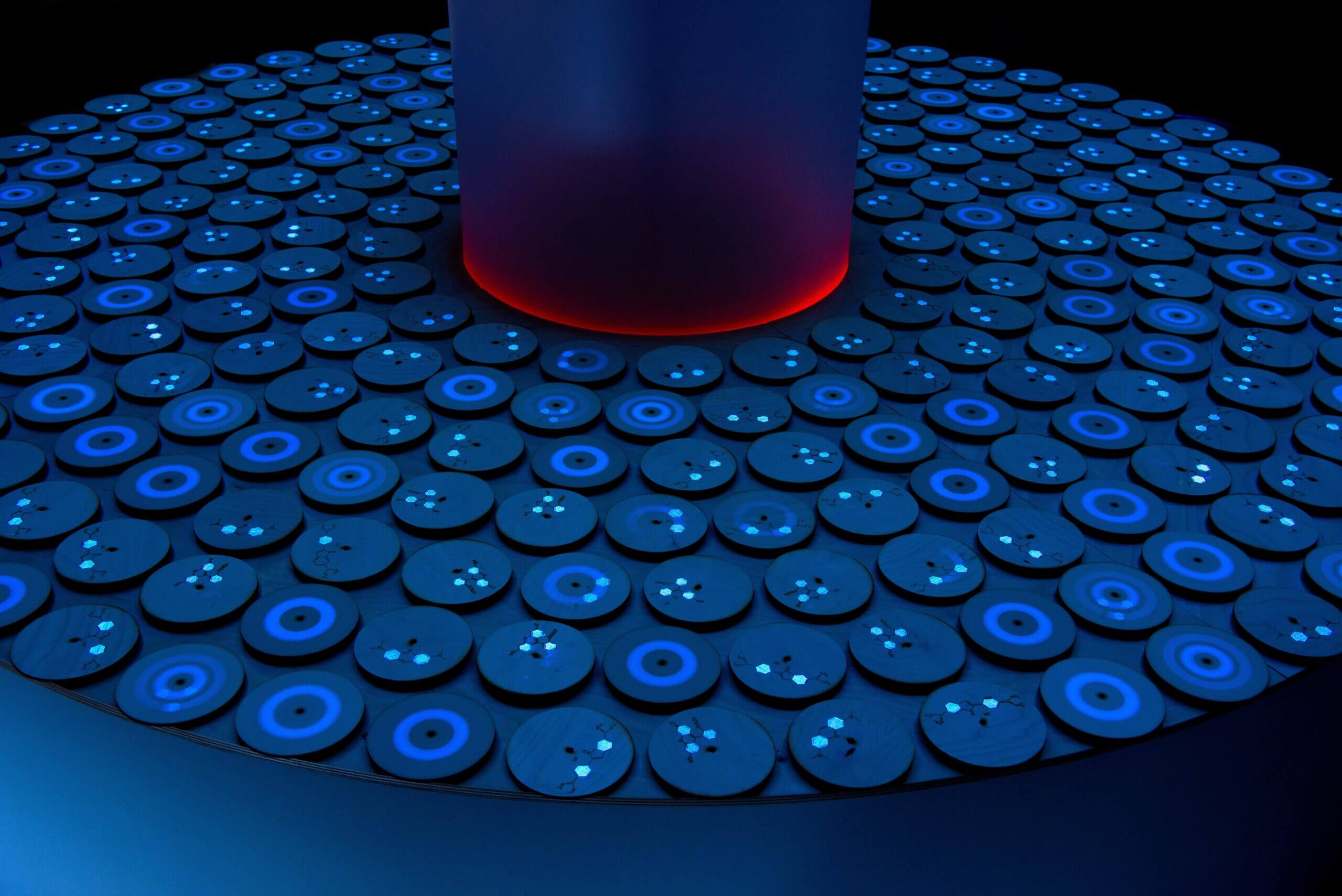A new and unique museum of its kind in Israel will be launched at Bar-Ilan University: Nano Museum * Will open with the exhibition: "New Languages"
What is the connection between 150 thousand office rubber bands and the restoration of a network of damaged neurons? What happens to an anxious drop of water and what does it have to do with the human soul? How do 16 violinists prove the chaos theory?
Scientists and artists embark on a journey of discovery leading to the creation of joint works in a new museum at the Nanotechnology Institute at Bar-Ilan University.

The Petar Museum of Art and Nanoscience, a new museum and the only one of its kind in Israel, presents works of art that are part of a developing research that is the result of collaboration between artists and scientists. The museum offers an experience of discovery, curiosity and broadening of the mind in the space spread over the seven floors of the Nanotechnology Institute at Bar-Ilan University, with works that will be displayed between the laboratories, in public spaces and more.
The exhibitions presented in the museum are the result of a long and joint work between contemporary artists and researchers from the fields of biology, physics, chemistry, engineering and computer science, and expose the visitors to live and pulsating research that takes place in the dozens of laboratories and to the dialogue that takes place between the researchers and the artists.
The museum's vision is to allow researchers and artists to discuss together the research dealing with the invisible nano world and the far-reaching implications of this research on the reality in our visible world. The enormous change in scale has implications for the world of culture, art and science.
Festive opening of the "New Languages" exhibition: Thursday, July 8 at 19:00 p.m. Curator: Tal Yizrael
In the opening exhibition of the Nano Museum, "New Languages", the collaborations between artists and scientists that matured into a new body of work are presented. The works are transdisciplinary, and present the unique language of communication between artists and scientists, the new syntaxes will be presented to the public for the first time after three years of working together.
Thought wandering, dizins (dizziness leading to discovery) and serendipity (discovery by chance while searching for something else) are fragile, necessary and decisive moments that occur in the artist's studio and research laboratory. Apart from them, other moves take place, such as disassembly and reassembly, trial and error moves, decoding and interpretation as well as drawing conclusions.
The Nano Museum is a platform for joint moves of this kind, which take place between artists and scientists. The collaborations take place over time, vary in scope and depth. Some of the collaborations do not continue and after short meetings the scientist returns to his laboratory and the artist to his studio, and some of them crystallize into a work of art that moves and changes according to the scientific research.

The exhibition opening the Nano Museum will present the joint work of the artist/scientist pairs: the artist Mahmoud Kays who links wood and the arabesque motif to the spatial structure of carbon nanotubes researched by Prof. Adi Solomon in her laboratory. Work of the sound artist Elad Schneiderman and Prof. Motti Friedman who prevented synchronization between 16 violinists and thus discovered a new scientific discovery related to human chaos. Work by Vardi Bobrov who tied 150 thousand rubber bands together following a study on the growth of damaged neurons, which Prof. Orit Shafi investigates. The artist Caroline Maxwell who painted using salt water from the Dead Sea and salt water from the salt water from Utah, USA, in the painting crystallized and changed in nanometric processes over several years and were a starting point for a new scientific study by Dr. Gili Tagori Cohen, who investigates the crystalline structure of materials using X-rays | Ili Levy created a world for a drop of water that moves along a path made entirely of hydrophobic (water-repellent) surfaces, which are produced in the laboratory of Prof. Shlomo Margel, which is an allegory for the paths in human experience and the battered worlds of the soul. The exposure to research, the identification of diseases by light irradiation and the use of gold nanoparticles, which takes place in the laboratory of Prof. Dror Pixler, led the artist Ella Goldman to create an impressive installation that charges the viewer with new experiences, according to movement and rotation.
The curator of the exhibition Tal Yizrael: "We set out on a journey to conceptually and technically distant worlds, yet very close to our very being. It is a porthole to the wonderland of the invisible. In nanoscience as in art, research into matter and essence leads to the discovery of new phenomena and new worlds."
More of the topic in Hayadan:

One response
It may be interesting, but it is not the first of its kind in Israel - there has been a nano museum as part of the Israel Museum for a long time.